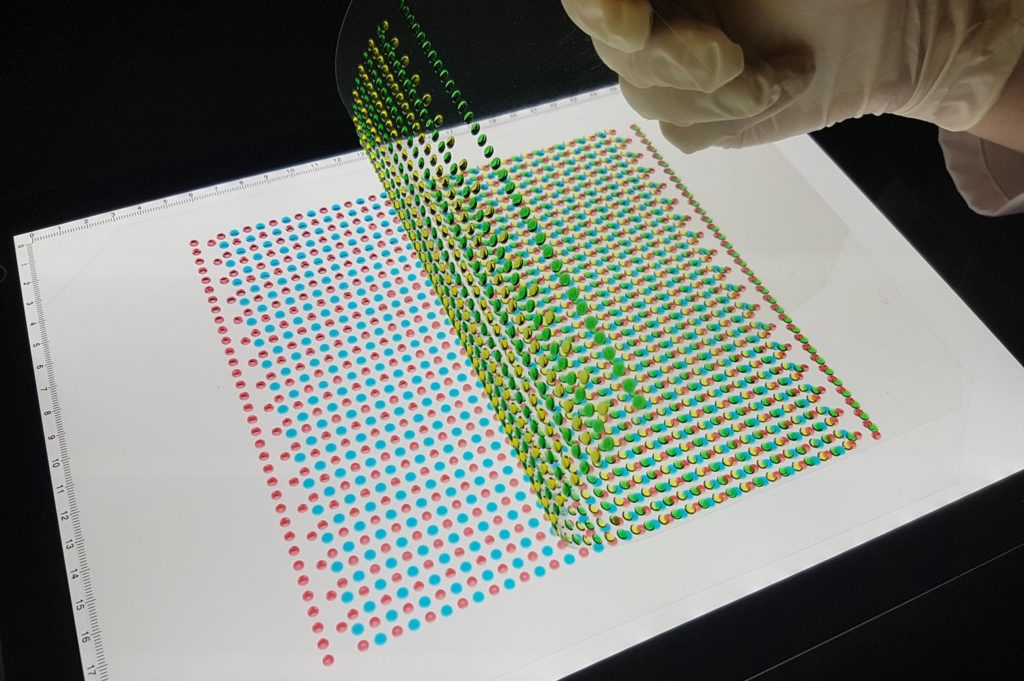
Electricity, eel-style: Soft power cells could run tomorrow’s implantables
Device generates over 100 volts from saltwater.

Device generates over 100 volts from saltwater.
Inspired by the electric eel, a flexible, transparent electrical device could lead to body-friendly power sources for implanted health monitors and medication dispensers, augmented-reality contact lenses and countless other applications.
The soft cells are made of hydrogel and salt, and they form the first potentially biocompatible artificial electric organ that generates more than 100 volts. It generates a steady buzz of electricity at high voltage but low current, a bit like an extremely low-volume but high-pressure jet of water. It’s perhaps enough to power a small medical device like a pacemaker.

While the technology is preliminary, Michael Mayer, a professor of biophysics at the Adolphe Merkle Institute of the University of Fribourg in Switzerland and the corresponding author on the paper, believes it may one day be useful for powering implantable or wearable devices without the toxicity, bulk or frequent recharging that come with batteries. Further down the road, it could even lead to bioelectric systems that could generate electricity from naturally occurring processes inside the body.
The device can’t hold a candle to the electric eel, which can pump out far more power in short bursts to zap prey or defend itself. But the researchers say they’ve taken an important first step that advances fundamental understanding of soft power sources. The team includes researchers from the University of Michigan, the Adolphe Merkle Institute at the University of Fribourg and the University of California San Diego. The work is detailed in a paper published in the December 14 issue of Nature.
“The eel polarizes and depolarizes thousands of cells instantaneously to put out these high voltages,” said Max Shtein, a professor of materials science and engineering at U-M and a co-author on the paper. “It’s a fascinating system to look at from an engineering perspective—its performance metrics, its fundamental building blocks and how to use them.”
One secret to the eel’s success is a phenomenon called trans-membrane transport. Specialized electrical organs contain thousands of alternating compartments, each with an excess of either potassium or sodium ions. The compartments are separated by selective membranes that, in the eel’s resting state, keep the two ions separate. When the eel needs to create a jolt of electricity, the membranes allow the ions to flow together. This creates a burst of power.
By the numbers:
The researchers built a similar system, though instead of sodium and potassium, they used the sodium and chloride that are naturally combined in common table salt, dissolved in water-based hydrogel. Using a specialized printer at the Adolphe Merkle Institute, they printed thousands of tiny droplets of the salty gel on a plastic sheet, alternating them with hydrogel droplets of pure water. The alternating droplets are similar to the eel’s compartments, and their differing salinity can be used to produce electricity.
Next, the team needed to mimic the eel’s selective membrane that keeps the compartments separate. They used a second sheet of alternating droplets, this one made of charge-selective hydrogel. Each droplet allows either positively charged sodium or negatively charged chloride to pass, excluding the other.
To generate power, the two sheets are pressed together, connecting saline and freshwater droplets across the charge-selective droplets in series. As the salty and fresh solutions mix, the charge-selective droplets move the sodium and chloride ions in opposing directions, producing an electric current.
The researchers took one final trick from the eel: its thousands of compartments can shuffle ions instantaneously, producing a coordinated jolt just when it’s needed. The researchers needed to do something similar with their thousands of alternating cells, combining them all in exactly the right order, simultaneously.
Shtein, along with graduate students Anirvan Guha of the Adolphe Merkle Institute and Thomas Schroeder and Aaron Lamoureux of U-M, solved the problem with an origami technique called a Miura fold. Invented by a Japanese astrophysicist, the Miura fold is already used to fold solar panels into satellites at launch, then unpack them into large sheets once they’re in space.
They used the idea in reverse, alternating all four droplet types in a precise pattern on a flat sheet that had been laser-scored in a Miura pattern. When pressure was applied, the sheet quickly folded together, stacking the cells in exactly the right positions.

The Tennessee Aquarium is home to an electric eel that uses its electrical discharges to post from its own Twitter account. Named Miguel Wattson, the eel’s exhibit is wired to a small computer that sends out a prewritten tweet when it emits electricity at a high enough threshold.
“The electric organs in eels are incredibly sophisticated; they’re far better at generating power than we are,” Mayer said. “But the important thing for us was to replicate the basics of what’s happening. You need two ionic solutions of different strengths and two membranes with selectivity for different ions. If you can assemble and disassemble a large number of these four compartments in a repeating sequence in a fast and coordinated fashion, you’re creating—in a minimalistic and robust way—essential parts of what the eel does.”
For now, the team is working to improve the device’s efficiency.
“The eel’s membranes are extremely efficient at selecting between different ions, and we believe making our membranes ion-selective rather than charge-selective may get us some improvements,” Schroeder said. “Thinner films of gel could lead to some gains as well—we hope to get a ten-fold increase in power by improving the geometry alone.”
The paper is titled “An electric-eel-inspired soft power source from stacked hydrogels.” Researchers on the project also included U-M biomedical engineering professor David Sept. The research was funded by the Air Force Office of Scientific Research and by the National Institute of General Medical Sciences of the National Institutes of Health, award number T32GM008353.